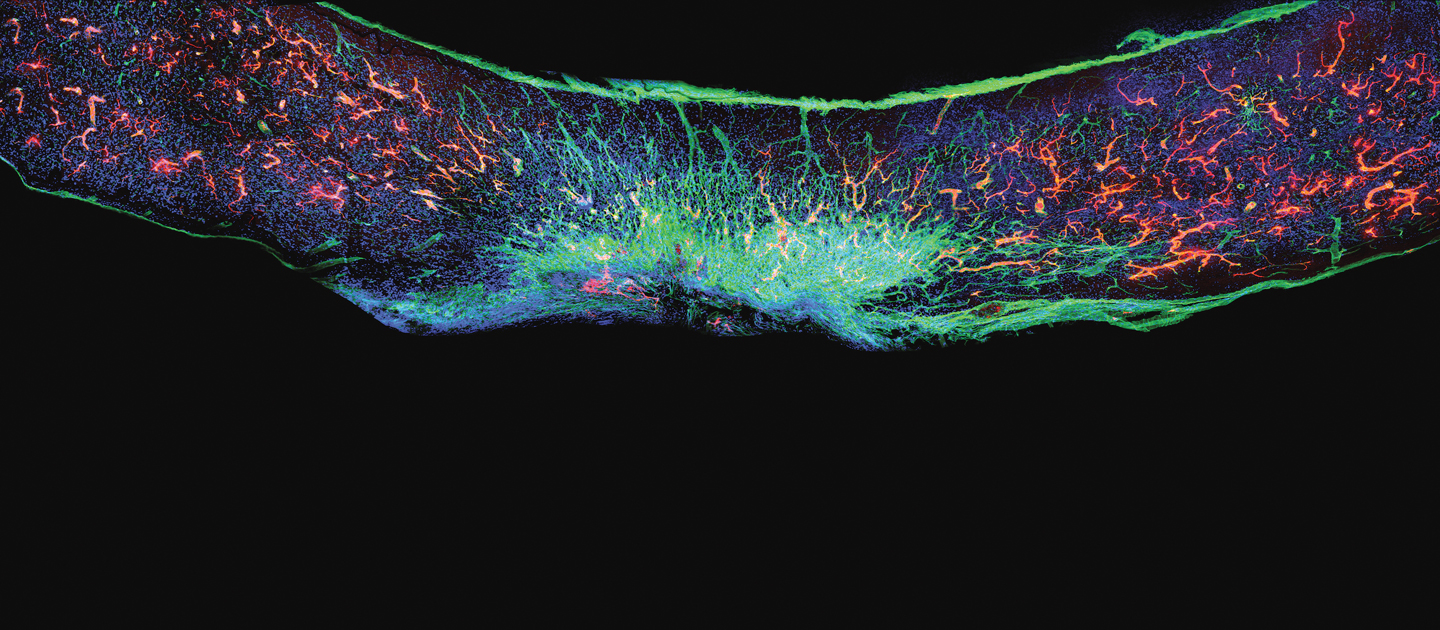Big Idea
“Dancing molecules” successfully repair severe spinal cord injuries.

Nearly 300,000 people in the United States are living with a spinal cord injury. Less than 3 percent of people with complete injury ever recover basic physical functions. Currently, there are no therapeutics that trigger spinal cord regeneration.
Professor Samuel I. Stupp has developed a new injectable therapy that harnesses “dancing molecules” to reverse paralysis and repair tissue after severe spinal cord injuries. When researchers administered a single injection of these molecules to tissues surrounding the spinal cords of paralyzed mice, the animals regained the ability to walk just four weeks later.
By sending bioactive signals to trigger cells to repair and regenerate, the breakthrough therapy dramatically improved severely injured spinal cords in five key ways:
- The severed extensions of neurons, called axons, regenerated
- Scar tissue significantly diminished
- Myelin, the insulating layer of axons, which is important in transmitting electrical signals efficiently, reformed around cells
- Functional blood vessels formed to deliver nutrients to cells at the injury site
- More motor neurons survived
“The innovation in our research, which has never been done before, is to control the collective motion of more than 100,000 molecules within our nanofibers,” Stupp says. “By making the molecules move, ‘dance,’ or even leap temporarily out of these structures, known as supramolecular polymers, they are able to connect more effectively with receptors.” This is the first study in which researchers controlled the collective motion of molecules through changes in chemical structure to increase a therapeutic’s efficacy.
